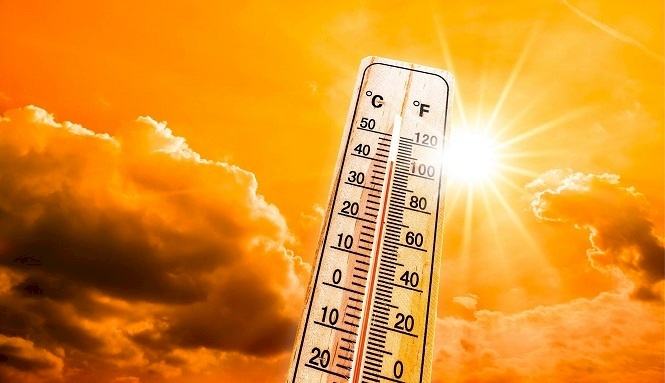
What is the Heat Dome and the Causes of the Severe Heat Wave in Palestine and Arab Countries?
SadaNews - Palestine and several countries in the Middle East are experiencing an unprecedented severe heat wave due to the effect of the "Heat Dome" phenomenon, which traps hot air for extended periods, significantly raising temperatures.
This phenomenon negatively impacts public health and increases electricity consumption, putting pressure on infrastructure and creating economic challenges related to rising demand for energy and electricity networks.
Record Heat Wave Hits Arab Countries
Forecasts indicate a noticeable rise in temperatures by mid this week in Palestine, Jordan, Iraq, Egypt, Syria, Lebanon, and northern Saudi Arabia due to the influence of a hot air mass moving toward the Middle East, with increases exceeding 10 degrees Celsius above the usual averages for this time of year.
This wave has led to a significant increase in electricity consumption, particularly for cooling purposes, prompting the International Energy Agency to call for measures to improve the efficiency of cooling devices and tighten building regulations, aiming to reduce energy demand and cut costs.
In Palestine and Jordan, this week is witnessing an unprecedented heat wave, with maximum temperatures in some areas reaching 43 degrees Celsius, amidst warnings against direct exposure to sunlight, especially during peak hours.
In Iraq, the provinces of Babylon and Karbala experienced a complete power outage on Monday due to the record rise in temperatures and increased consumption, according to the Iraqi Ministry of Electricity.
In Egypt, the General Authority for Meteorology warned of a severe heat wave sweeping most of the country from Monday to next Friday, with predictions of temperatures reaching 49 degrees Celsius in the shade in the south of the country.
The General Directorate of Meteorology in Syria also warned of rising temperatures to around 49 degrees Celsius, particularly in the eastern region and the Jazira area.
What is the Heat Dome?
The Heat Dome is a meteorological phenomenon that occurs when a mass of hot air is trapped under a stable high-pressure system over a specific area, preventing the movement of hot air and holding it in place.
This entrapment leads to a noticeable and sustained rise in temperatures for periods ranging from several days to weeks, causing severe heat waves that affect the environment and public health and increase energy consumption.
Heat domes form due to several factors, primarily the heating of ocean and sea surface waters, alongside the effects of global warming that weaken the jet stream passing over the northern Atlantic Ocean.
Heat domes typically appear during the summer, especially in inland and dry areas, and are accompanied by increasing heat waves and drought due to global warming and changes in global wind patterns.
This phenomenon leads to a marked increase in temperatures, raising the likelihood of wildfires and posing a threat to public health through heat strokes and heat stress.
Moreover, the heat dome exerts pressure on electricity grids due to the excessive use of cooling devices, in addition to its negative effects on agriculture and water resources.
In this context, the International Energy Agency forecasts a 4% increase in energy demand annually until 2035, with growth concentrated in emerging economies, highlighting the urgent need to improve cooling efficiency and reduce pressure on the networks.

"X" Unifies Messaging System and Merges Direct Messages with "XChat" into One Tab

Innovative and Promising Treatment for Restoring Visual Field in Stroke Survivors

How does "Microsoft Copilot" transition from a work tool to a daily companion for users?

For Better Sleep... 9 Fruits Rich in Melatonin

What Happens to Your Blood Sugar Levels When You Fast?

What Happens to Your Body When You Follow a Low-Carbohydrate Diet?

3 Practices to Reduce the Risk of Cancer

